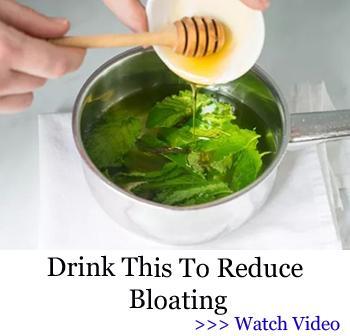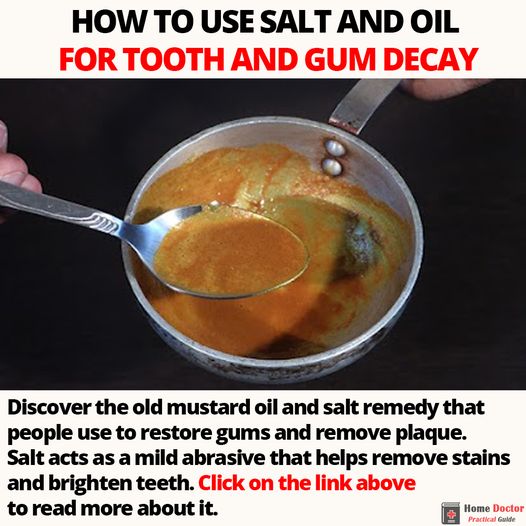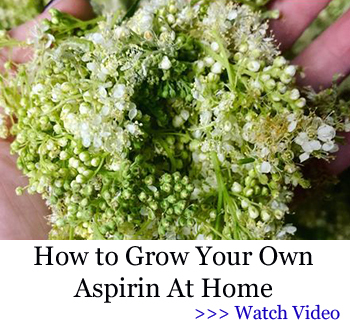Your arteries are the largest of your body’s blood vessels, and they play the crucial role of delivering oxygen and nutrients to every organ, tissue, and cell. So, to say that keeping these vital channels in tip-top shape is important for your health is a bit of an understatement.
But millions of Americans are plagued by unhealthy arteries. They have what’s called atherosclerosis—an inflammatory condition where plaques (fatty deposits composed of cholesterol and other substances) build up inside arteries, which interferes with normal blood flow and can lead to heart disease, heart attacks, and stroke. Per some estimates, atherosclerosis is the underlying cause of 50% of all deaths in Westernized society, and it’s the major underlying cause of strokes and Alzheimer’s disease.
The good news: There’s plenty you can do from a dietary perspective to curb your risk for atherosclerosis and even reverse the plaque buildup that’s already there.
Quick Glossary Of Terms
A list of definitions for terms used throughout this article:
Antioxidant – Compounds that help protect your cells and tissues from oxidative damage caused by molecules known as free radicals.
Free radicals – Unstable molecules that rob other cells of electrons (causing oxidation), which contributes to a range of diseases. Free radicals are natural byproducts of metabolism, but things like pollution, UV light, and highly processed foods can drive unhealthy levels.
Polyphenols – A broad category of beneficial plant compounds (or phytochemicals) with antioxidant properties that appear to offer protection against heart disease, certain cancers, diabetes, and other diseases.
Flavonoids/Flavonols – A subtype of polyphenol compounds known for their antioxidant and anti-inflammatory properties. Many flavonoids are responsible for the vivid colors found in fruits and vegetables.
Insulin resistance – A condition in which cells in your muscles, liver and fat don’t respond well to the hormone insulin, and thus cannot easily take up glucose (or sugar) from your blood. Over time, this may lead to type 2 diabetes and damage the lining of arteries.
LDL cholesterol – Low density lipoprotein (LDL) cholesterol is often referred to as the “bad” cholesterol. LDL particles — particularly small dense LDL (sdLDL) and oxidized LDL — can build up on the walls of your blood vessels and arteries as plaque and contribute to heart attack and stroke.
What causes plaque buildup in arteries, anyway?
A common misconception about arterial plaque (atherosclerosis) is that it’s mainly caused by high LDL cholesterol levels. But the thinking in this area is evolving, and Dr. Ford Brewer, MD, MPH, a board-certified preventative & occupational medicine specialist, says it’s only a small part of the picture.
So what’s the big culprit?
“Insulin resistance—having prediabetes or diabetes—is the most common cause of atherosclerosis, and therefore heart attack and stroke, kidney disease, blindness, etc,”
says Dr. Brewer.
“LDL matters, but only a fraction as much.”
Typically, he adds, insulin resistance is caused by a high-sugar, high-carb diet or having excess body fat.
According to the Centers for Disease Control and Prevention, around a third of Americans have insulin resistance, a condition in which cells in your muscles, fat, and liver don’t respond well to insulin and can’t easily take up glucose (or sugar) from your blood. This, in turn, elevates levels of insulin and glucose in the bloodstream, which creates widespread inflammation, and can damage the lining of arteries over time.
“The damage weakens the arterial lining and makes it easier for cholesterol molecules to enter through the artery wall,”
says Dr. Brewer.
“This cholesterol builds up inside the artery as plaque, which narrows the opening in the artery.”
Not only does this slow blood flow, but plaque accumulation in arteries prompts your body to release immune cells that attack the plaque, which makes it less stable, explains Dr. Brewer. This unstable liquid plaque can then squirt into the artery, causing a clot—and as we know, clots can result in serious heart problems and stroke.
How dietary changes help keep atherosclerosis at bay
As mentioned above, the main contributors to insulin resistance—and thus atherosclerosis—are a high-sugar or high-carb diet, and being overweight or obese. The good news? These risk factors, along with elevated LDL cholesterol (which is a lesser contributor to atherosclerosis), can be addressed with strategic dietary shifts.
From a broad perspective, eating a diet rich in anti-inflammatory, antioxidant-rich foods (think: veggies, low-glycemic fruits, nuts, seeds, fish, olive oil), scaling way back on sugar, and swapping out refined grains like bread for small quantities of whole grains like quinoa is a smart idea. This way of eating is ideal for maintaining balanced blood sugar (and thus preventing insulin resistance), and it has been shown to reduce risk of atherosclerosis and heart disease.
Just keep in mind, even whole grains can be a significant source of carbs, so to minimize fluctuations in blood sugar, pair them with a healthy fat or protein. If you own a glucometer, you can test your blood glucose levels after eating to see which grains—if any—you tolerate best.
Feeling extra motivated? Eat more of the specific foods below, which have been studied for their cardiovascular benefits and may help naturally unclog arteries by supporting balanced blood sugar, weight loss, curbing inflammation, and lowering LDL cholesterol.
- Medicinal Garden
- With your seeds kit, you’ll also receive a FREE Medicinal Guide that shows you how to turn these 10 plants into tinctures, ointments, salves, poultices, decoctions, infusions, essential oils —all in minute detail so you can follow our guide even if you’ve never made an herbal medicine in your life.
- Fatty Fish
Fatty fish, including salmon, sardines, anchovies, and mackerel, are a potent source of omega-3 fats — powerfully anti-inflammatory unsaturated fats that have protective effects against vascular inflammation and atherosclerosis. Omega-3s can also reduce platelet aggregation (which reduces risk of blood clots), lower triglyceride levels, and increase levels of good HDL cholesterol, which helps counteract the plaque-depositing effects of unhealthy LDL cholesterol.
Additionally, research shows that people who eat 2+ servings of fish per week are less likely to develop atherosclerosis in their carotid arteries.
- Flax Seeds
Flax seeds are also a good source of anti-inflammatory plant-based omega-3s (alpha-linolenic acid), along with fiber, and antioxidant plant compounds called lignans. Regular flaxseed intake has been associated with decreased blood sugar and insulin levels, and improved insulin sensitivity, among overweight and obese individuals with prediabetes. And preliminary research on animals suggests that regular flax consumption can help halt the progression of atherosclerotic plaques.
Just keep in mind: Whole flax seeds aren’t fully broken down during digestion, so to reap their full benefit, opt for ground flax seeds and store them in the fridge.
- Berries
Blackberries, blueberries, raspberries, and strawberries pack a big punch when it comes to arterial health. These deeply hued fruits are chock-full of polyphenol compounds such as quercetin and anthocyanins, which exert powerful anti-inflammatory and antioxidant effects. Thanks to these compounds (and a nice dose of fiber), berry consumption has been linked to improvements in LDL cholesterol, blood pressure, and even blood sugar control — all of which help keep arteries clear and healthy.
Compared to other fruits like grapes, oranges, and apples (which are high in a form of sugar called fructose), berries are a particularly great choice for regular consumption because they’re low glycemic, i.e. they’re unlikely to spike blood sugar.
- Citrus Fruits
Citrus is jam-packed with polyphenol compounds called flavonoids. These citrus bioflavonoids have powerful antioxidant properties, meaning they scavenge free radicals that might otherwise cause oxidative stress and drive disease processes. Specifically, citrus bioflavonoids can help prevent LDL cholesterol from turning into an even more damaging, inflammatory form of cholesterol known as oxidized LDL, which is strongly associated with atherosclerosis. A study found that eating a grapefruit a day significantly reduced cholesterol and triglyceride levels in people who had just undergone coronary bypass surgery.
Lower sugar citrus foods are best. Opt for grapefruit (as long as it doesn’t interfere with any of your medications) or add a squeeze of lemon or lime to your water for a bioflavonoid boost.
- Extra virgin olive oil
Higher intake of olive oil is associated with reduced risk of death and cardiovascular events like heart attack and stroke. What sets olive oil apart? It’s a rich source of monounsaturated fatty acids (MUFAs) and polyphenol antioxidant compounds. Research has shown that diets rich in MUFAs are associated with increased “good” HDL cholesterol and reduced “bad” LDL cholesterol; while extra virgin olive oil’s polyphenols help lower inflammation, reduce platelet aggregation, prevent LDL oxidation, and reduce blood pressure.
Olive oil also has a beneficial effect on blood sugar—according to one meta-analysis, people c
onsuming the most olive oil had, on average, a 16% reduced risk of developing type 2 diabetes and reductions in hemoglobin A1c (HbA1C), an measure of average blood glucose over several months.
- Avocado
Avocados deliver a one-two punch for cleaning out your arteries. Like olive oil, avocados contain loads of blood sugar-stabilizing, cholesterol-optimizing MUFAs. But they’re also a surprisingly great source of fiber, clocking in at about 6.5 grams per half avocado. A recent study also found that eating one avocado per day is associated with reductions in LDL cholesterol.
While some people are wary of eating avocados because they also contain some saturated fat, you don’t have to worry about that, says Dr. Brewer. Although saturated fat intake may increase LDL cholesterol, it typically only increases the larger, “bouncier” LDL particles that are less likely to stick to artery walls and cause damage than small, dense LDL particles. Additionally, most recent research has found no beneficial cardiovascular effects of reducing saturated fat intake.
- Legumes
If you tend to eat a lot of grain-based side dishes, consider swapping them for legumes (beans, peas, chickpeas, lentils). These pack a hefty dose of fiber, including soluble fiber, which can help prevent atherosclerosis by lowering LDL cholesterol. Even one serving of beans per day has been associated with significantly reduced LDL. Legumes have also been linked to reductions in blood pressure and chronic inflammation, both of which are contributors to atherosclerosis and blood vessel damage.
According to the American Diabetes Association, beans are relatively low on the glycemic index, which means they’re unlikely to spike blood sugar even though they contain some carbohydrates. However, Dr Brewer warns that, among certain individuals, legumes may elevate blood sugar. He advises many of his patients to ‘eat to the meter’ (glucose meter), especially with lentils, as these can be particularly problematic for prediabetics. Pairing legumes with a source of fat and/or protein can curb their blood sugar spiking potential.
- Tomatoes
Tomatoes, especially cooked tomatoes and tomato sauce, are a great source of lycopene — a powerful plant compound responsible for tomatoes’ red color, and which has been associated with increased “good” HDL cholesterol. In one study, people eating a diet rich in lycopene from tomato products were 17-26% less likely to develop heart disease; and in another study, higher blood levels of lycopene were associated with lower risk of stroke. Pro tip: Fat increases your body’s absorption of lycopene, so add a glug of olive oil to that pasta sauce. - Allium Vegetables
Higher intake of allium veggies (and cruciferous veggies, which we’ll cover below) has actually been associated with a reduced risk of death from atherosclerotic vascular disease. Allium veggies like garlic, onions, leeks, chives, scallions, and shallots are all rich in organosulfur compounds, which, according to several studies, may help reduce blood pressure, cholesterol, inflammation, and platelet clumping — all of which are great for keeping arteries free and clear. - Cruciferous Vegetables
Like allium vegetables, cruciferous vegetables (think: broccoli, cauliflower, brussels sprouts, arugula, cabbage) also contain organosulfur compounds and may reduce your risk of death from atherosclerosis. And further research has found that consuming all vegetables, especially cruciferous vegetables, is associated with thinner, healthier carotid artery walls (thick artery walls, on the other hand, are a marker of atherosclerosis). Cruciferous veggies also contain blood sugar-stabilizing, cholesterol-lowering fiber. - Walnuts
Nuts are a good source of protein, fiber, and healthy fats, and regular nut consumption has been associated with a reduced risk of overall cardiovascular disease and coronary heart disease, which occurs when plaque buildup restricts blood flow to the heart. Of all nuts, walnuts contain the highest levels of heart-healthy, plant-based omega-3s. In an impressive animal study, consuming walnuts as part of a high-fat diet resulted in a 55% reduction in atherosclerotic plaque development compared to control diets. - Beets
Red, golden, and rainbow beets may be controversial in the flavor department — with a notable earthiness — but there’s no question they’re good for supporting healthy blood flow. Beets and beetroot juice are some of the best sources of beneficial dietary nitrates, which are converted to nitric oxide (NO) in the bloodstream. NO relaxes and widens blood vessels, which lowers blood pressure and helps prevent damage to artery walls that could make them more vulnerable to narrowing and plaque buildup. To mellow beets’ earthy flavor, try roasting them with olive oil or toss them into a smoothie. - Spinach
Like beets, spinach and other dark leafy greens are a good source of dietary nitrates, which support supple, f - ree-flowing blood vessels and arteries by boosting NO production. Additionally, leafy greens contain fiber and a range of micronutrients, including folate. Folate plays a key role in cardiovascular health by lowering levels of the amino acid homocysteine. High blood levels of homocysteine are a known risk factor for atherosclerosis, as they can damage the lining of blood vessels and increase arterial plaque buildup.
- Dark chocolate
Dark chocolate is a potent source of polyphenol compounds, specifically cocoa flavanols, which have been shown to help lower blood pressure and improve blood flow (by boosting nitric oxide production), lower inflammation, and prevent blood clots. Some research even suggests that cocoa flavanols help recruit our body’s own stem cells (specifically, endothelial progenitor cells) to help repair damaged blood vessels and grow new ones — which is key for preventing and reversing the vascular damage that can clog arteries and lead to heart disease. - Opt for a low to no-sugar dark chocolate that’s 70% cocoa or higher (or use unsweetened cocoa powder in a smoothie) and consider pairing it with some walnuts to keep blood sugar levels stable.
- Spices
Flavorful herbs and spices are often potent sources of beneficial compounds that can benefit the heart and arteries — even cinnamon, which you probably have in your pantry already. Research suggests that cinnamon intake may be associated with reduced levels of HbA1C and blood pressure among patients with type 2 diabetes. Meaning, this spice could help counter the negative effects of insulin resistance that contribute to atherosclerosis - Cinnamaldehyde, an organic compound in cinnamon, has also been shown to have anticoagulant properties that may help curb risk of blood clots; and preliminary research suggests that cinnamon inhibits the atherosclerosis process in animals with high cholesterol.
- Some other spices that show promise in curbing various atherosclerosis risk factors include ginger, turmeric, and garlic.
- Green Tea
You can sip your way to clear, healthy arteries, too. In one meta-analysis, researchers calculated that each daily cup of green tea corresponded to a 5% lower risk of death caused by cardiovascular disease. And, in another study, green tea consumption was associated with a decrease in vascular cell adhesion molecules, which are proteins released in response to inflammation that cause cells to stick to surroundings and each other — meaning, they can be a big contributor to clogged arteries. The magic lies with green tea’s polyphenol compounds called catechins, which have powerful antioxidant and anti-inflammatory effects. - What about fasting diets?
- Given the popularity of intermittent fasting and water fasting diets (in which you typically eat all of your food within a specified daily window, and consume nothing but water, tea, or coffee outside of that window), you may be wondering if they could help dissolve arterial plaque, too. After all, they’ve shown some promise for weight loss.
- While the research in this area is still young, intermittent fasting (or IF) does seem promising for preventing arterial plaque buildup. In a 2019 research review, authors write that “intermittent fasting inhibits the development of atherosclerotic plaque by reducing the concentration of inflammatory markers, such as IL-6, homocysteine, and [C-reactive protein].”
- In another recent review, published in the renowned New England Journal of Medicine, authors were similarly optimistic, citing that IF improves a range of cardiovascular health markers in human and animal studies, including blood pressure, LDL and HDL levels, and insulin resistance. Additionally, they write, “intermittent fasting reduces markers of systemic inflammation and oxidative stress that are associated with atherosclerosis.”
- Of course, there are many styles of intermittent fasting, so if you’re planning to try it, seek out the guidance of your doctor or a registered dietitian.
Do you know about the gift of nature to save the life of people from various health problems and make them feel secure by curing significant issues? How to live healthy in this world without having chronic diseases or illness or any other health issues which may hurt you physically and mentally? Due to dense population, people are trying to demolish the forest, garden areas to create shelter, so they forced to destroy the nature’s gift such as natural ingredients, secret medicinal herbs and more which are grown in wild forest, mountains and other places. When you read this review entirely, sure you will get chance to know about secrets medicinal ingredients, herbs and more used by our ancestor to get back the lost health without losing your life. Claude Davis was highlighted all the stuff in the form of the e-book The Home Doctor filled with a list of natural ingredients and remedies that you can quickly grow in the backyard or at free space to include it in your routine diet or external usage to get well soon.
Books can be your best pre-collapse investment.
Carnivore’s Bible (is a wellknown meat processor providing custom meat processing services locally andacross the state of Montana and more. Whether your needs are for domestic meator wild game meat processing)
The Lost Book of Remedies PDF ( contains a series of medicinal andherbal recipes to make home made remedies from medicinal plants and herbs.Chromic diseases and maladies can be overcome by taking the remediesoutlined in this book. The writer claims that his grandfather was taughtherbalism and healing whilst in active service during world war twoand that he has treated many soldiers with his home made cures. )
Easy Cellar(Info about building and managing your root cellar, plus printable plans. The book on building and using root cellars – The Complete Root Cellar Book.)
The Lost Ways (Learn the long forgotten secrets that helped our forefathers survive famines,wars,economic crisis and anything else life threw at them)
LOST WAYS 2 ( Wordof the day: Prepare! And do it the old fashion way, like our fore-fathers did it and succeed longbefore us,because what lies ahead of us will require all the help we can get. Watch this video and learn the 3 skills that ensured our ancestors survival in hard times offamine and war.)
The post Foods That Unclog Arteries (Most People Ignore) appeared first on PrepperFortress.





